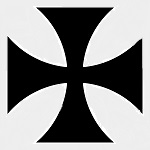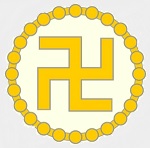Corgi AA38307 German Fokker Dr.1 Triplane Fighter - 155/17, Lt. Eberhard Mohnicke, Jasta 11, von Richthofen's Flying Circus, Lechelle, France, 1918 (1:48 Scale)
"The important thing in aeroplanes is that they shall be speedy."
- Baron Manfred Von Richthofen
 The Fokker Dr.I Dreidecker (triplane) was a World War I fighter aircraft built by the company of Anthony Fokker, and designed by Reinhold Platz. It became most famous as the plane of the Red Baron, Manfred von Richthofen.
The Fokker Dr.I Dreidecker (triplane) was a World War I fighter aircraft built by the company of Anthony Fokker, and designed by Reinhold Platz. It became most famous as the plane of the Red Baron, Manfred von Richthofen.
In April 1917, the Royal Naval Air Service (RNAS) introduced the Sopwith Triplane. Their debut was sensational and they swiftly proved to be superior to the Albatros and Halberstadt scouts then in use by the German Air Service. Soon the German pilots were clamouring for a triplane of their own. The majority of the German aircraft manufacturers, including Pfalz, AEG, DFW, Schutte-Lanz, and Euler, responded with new triplane designs. Most displayed little promise, though limited production of the Pfalz Dr. I was undertaken.
Fokker responded with the V.3, a small rotary-powered triplane with a tubular steel frame fuselage and thick cantilever wings. Fokker found several deficiencies in the V.3, particularly regarding control forces. Instead of submitting the V.3 for a type test, Fokker produced a revised prototype designated V.4. The most notable changes were horn-balanced ailerons and elevators, as well as wings of increased span. The V.4 also featured interplane struts, which were not necessary from a structural standpoint, but which had the effect of minimizing wing flexing. The V.4 proved highly manueverable and much superior to the triplane prototypes submitted by other manufacturers. The rudder and elevator controls were powerful and light. Rapid turns were facilitated by the triplane's directional instability. The ailerons were also light, but not very effective.
After a type test, an immediate production order ensued. The V.4 prototype was intentionally destroyed in static structural tests. The two pre-production examples, designated F.I, were delivered in the middle of August 1917. These were the only machines to receive the F.I designation. Delivery of production machines, designated Dr.I, commenced in October of that year.
Pictured here is a 1:48 scale replica of a German Fokker Dr.1 triplane fighter that was piloted by Lt. Hans Kirschstein, who was attached to Jasta 6 during April 1918.
Sold Out!
Dimensions:
Length: 6-inches
Wingspan: 7-1/2-inches
Release Date: April 2020
 Historical Account: "Sauvastika" - The term sauwastika (or sauvastika) is sometimes used to distinguish the left-facing from the right-facing swastika symbol, a meaning which developed in 19th-century scholarship.
Historical Account: "Sauvastika" - The term sauwastika (or sauvastika) is sometimes used to distinguish the left-facing from the right-facing swastika symbol, a meaning which developed in 19th-century scholarship.
The left-facing variant is favoured in Bon and Gurung shamanism; it is called yungdrung in Bon and gurung yantra in Gurung shamanism. Both the left-facing and right-facing variants are employed in Hinduism, Jainism and Buddhism.
In Buddhism, the left-facing sauwastika is often imprinted on the chest, feet, palms of images of various Buddhas. It is also the first of the 65 auspicious symbols on the footprint of the Buddha. In Hinduism it is often associated with esoteric tantric practices and often stands for Goddess Kali.


